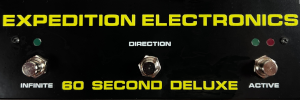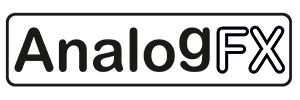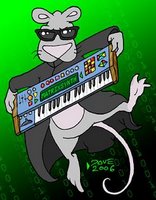Showing posts sorted by relevance for query B. Sort by date Show all posts
Showing posts sorted by relevance for query B. Sort by date Show all posts
Friday, June 24, 2022
New Destiny + Buchla Easel Cards
This one is in via Meska.
Details via Destiny+
Dual function source & utilities.
Function frequency A, Function frequency B, Fm in A, Fm in B, Fm cv A, Fm cv B, Sine out A, Sine out B, S&H out A, S&H out B, S&H in A, S&H in B, S&H clock in A, S&H clock in B, S&H output lag A., S&H output lag B, White noise, Pink noise, Square out A, Square out B.
Sunday, June 16, 2024
"The Deep End" Vol. 1 - 76 Custom Novation Bass Station II Presets by Glo Phase
video upload by Glo Phase
https://www.josephrusnakmusic.com/dow...
"After ten years with this wonder of a synth and a handful of requests I decided it was time to organize my own presets into a collection to make available for download. "The Deep End" is comprised of Basses, Leads, Plucks, Duophonic Keys, as well as a few FX and Drum patches. These are a combination of some of my favorite personal patches I’ve created over the past 10 years as well as some new creations made specifically for this preset pack. I was aiming for some versatility but naturally gravitate toward sounds I personally like, as well as more usable sounds.
Patch list below. Enjoy!"
Tuesday, April 23, 2013
Plan B Toolbox Synthesizer Built for Danny Carey of Tool
Published on Apr 23, 2013 Peter Grenader·17 videos
"This is the Plan B Toolbox Modular Synthesizer, built for Danny Carey of Tool which will make it's public debut with Tool on Saturday, April 27 at the Rod Laver Arena, Melbourne, Australia - replacing the iconic Synthi AKS Danny has been using for nine years. This was filmed in Danny's studio just before it was packed into it;s road case for the trip. Instrumentation of the synth is as follows:
Row 1:
Subcon/Plan B Model 15 VCO
Plan B Model 15 VCO (x2)
Plan B Model 39 Wave Splicer
Subcon/Plan B Model 37 Utility VCO/LFO
Plan B Model 9 Mixer
Plan B Model 7 ELF Panner
Output module (power) outputs/levels , light
Row 2:
Intelligel Quantizer
Intellijel microfold
Plan B Model 10 Envelope Generator (x2)
Plan B Model 12 Vactrol Filter
Plan B Model 11 Evil Twin Bandpass Filter
Plan B Model 13 Dual Timbral Gates
Plan B Model 25 Multi-Tasking Audio Processor (attenuator/waveshaper, VC, Ring Modulator)
Row 3:
ADDAC Integrator
Plan B Model 23 Analog Shift Register
Plan B Model 28 Programmable Tap Clock
Plan B Model 14 Dual Voltage Processor/Crossfader
Plan B Model 26 Multi-Tasking Control Processor (boolean gates, voltage mirror, portemento)
Plan B Model 24 Heisenberg Generator (slopped and arbitrary random voltage generators)
Plan B Model 21C Mini Milton Sequencer
Row 4:
Make Noise Phonogene
Make Noise Echophon
Intellijel Korgmatrom FIlter
Plan B Model 10 Envelope Generator
Plan B Model 21 Buffered Multiple
http://www.ear-group.net
Case built by Chas Smith"
Tuesday, October 09, 2012
WMD Gamma Wave Source – Eurorack Wavetable Modular Synth Module
Note: links to listings are affiliate links for which the site may be compensated.
via this auction
Three videos below. Description via WMD.
"The WMD Gamma Wave Source is a dual digital wavetable VCO that can create millions of timbres using onboard digital 'effects'.
The Controls
1V/Oct - Pitch input, used with standard 1 Volt per Octave keyboards and MIDI-CV converters. 0-5 volt input.
Pitch 1 & 2 - Controls the relative pitch per channel.
WT 1 & 2 Select - Select the desired wave table from the chart. 256 are available, each producing a different sound. Click for the table chart.
Out 1 & 2- Oscilator section output, each puts out +-2.5V/ 5Vpp signal.
The Effects Section

The GWS has four effects pipelines. Two for each oscilator. The Routing table selects how the oscillators interact with the effects pipelines.
FX Select Knob - Pushing this knob in will select the column that the knob is adjusting. Turning it will adjust the LEDs in the select column and will alter the Routing or Effects selection.
FX Para 1 & 2 - These knobs control the FX parameter for the oscillator section. Each effect has a specific parameter that is controlled by this knob. Adujust to taste.

Para CV & Attenuation Knob - This is a CV input for modulating and controlling the effects on the oscillator. Press the WaveTable Select knob to activate CV control per oscillator section. The LED will light when CV control is active. The FX Para knob will adjust the center or edges of the CV control depending on the selected effect.
Effects Table - These are the available effects, they are all created mathematically using 8 bit processing. The result is generally lo-fi and edgy, but smooth fat sounds are also possible.
LPF - Digital low pass filter, mellows out tone
HPF - Digital high pass filter, removes lows for brighter tone
Sharpen - Similar to HPF, but more aggressive
Bit Depth - Reduces vertical fidelity of signal
Bit Flip - Collapses signal in on itself, adds harmonics
Sample Rate - Reduces horizontal fidelity of signal
Sample Kill - Kills samples at a rate set by Para knob.
Sample Polarity - Inverts the signal at a rate set by Para knob
A+B - Adds the OSC1 and OSC2 wave tables and outputs
A-B - Subtracts the OSC1 and OSC2 wave tables and outputs
Routing Table - The routing table is depicted by the red rectangle. If no LED is lit, then effects are bypassed entirely.
A | B - OSC 1 -> FX A | OSC 2 -> FX B
AB | BA - OSC 1 -> FX A -> FX B | OSC 2 -> FX B -> FX A
AB | B - OSC 1 -> FX A -> FX B | OSC 2 -> FX B
A | BA - OSC 1 -> FX A | OSC 2 -> FX B -> FX A
AB | Byp - OSC 1 -> FX A -> FX B | OSC 2 -> No FX
Byp | BA - OSC 1 -> No FX | OSC 2 -> FX B -> FX A
CycA | B - OSC 1 -> Cycle forward through FX A | OSC 2 -> FX B
A | CycB - OSC 1 -> FX A | OSC 2 -> Cycle reverse through FX B
CycA | CycB - OSC 1 -> Cycle forward FX A | OSC 2 -> Cycle reverse FX B
RndA | RndB - OSC 1 -> Random FX A | OSC 2 -> Random FX B
When cascading effects (Osc 1 -> FX A -> FX B) the first effect in the chain has its parameter set by the FX Para knob ONLY in the top routing mode (A|B). This is then saved so that the tone can be retained during cascading.
Cascading Sequence - Properly cascading effects requires this process:
Set routing to (A|B)
Set first effect in chain and adjust parameter to taste
Set routing to cascaded mode (AB|B)
Set second effect (FX B) to taste using FX Para knob
Adjusting the wave table will retain parameter settings for the first effect in the chain..."
WMD Gamma Wave Source
Uploaded by WMDEffects on Jan 3, 2011
WMD Gamma Wave Source rhythms
Uploaded by Ben Davis on Feb 5, 2011
"First patch with the WMD Gamma Wave Source dual digital wavetable VCO. Just a simple test patch to hear the various waveforms and effects of this oscillator."
http://wmdevices.com/gammawave.php
Three videos below. Description via WMD.
"The WMD Gamma Wave Source is a dual digital wavetable VCO that can create millions of timbres using onboard digital 'effects'.
The Controls
1V/Oct - Pitch input, used with standard 1 Volt per Octave keyboards and MIDI-CV converters. 0-5 volt input.
Pitch 1 & 2 - Controls the relative pitch per channel.
WT 1 & 2 Select - Select the desired wave table from the chart. 256 are available, each producing a different sound. Click for the table chart.
Out 1 & 2- Oscilator section output, each puts out +-2.5V/ 5Vpp signal.
The Effects Section

The GWS has four effects pipelines. Two for each oscilator. The Routing table selects how the oscillators interact with the effects pipelines.
FX Select Knob - Pushing this knob in will select the column that the knob is adjusting. Turning it will adjust the LEDs in the select column and will alter the Routing or Effects selection.
FX Para 1 & 2 - These knobs control the FX parameter for the oscillator section. Each effect has a specific parameter that is controlled by this knob. Adujust to taste.

Para CV & Attenuation Knob - This is a CV input for modulating and controlling the effects on the oscillator. Press the WaveTable Select knob to activate CV control per oscillator section. The LED will light when CV control is active. The FX Para knob will adjust the center or edges of the CV control depending on the selected effect.
Effects Table - These are the available effects, they are all created mathematically using 8 bit processing. The result is generally lo-fi and edgy, but smooth fat sounds are also possible.
LPF - Digital low pass filter, mellows out tone
HPF - Digital high pass filter, removes lows for brighter tone
Sharpen - Similar to HPF, but more aggressive
Bit Depth - Reduces vertical fidelity of signal
Bit Flip - Collapses signal in on itself, adds harmonics
Sample Rate - Reduces horizontal fidelity of signal
Sample Kill - Kills samples at a rate set by Para knob.
Sample Polarity - Inverts the signal at a rate set by Para knob
A+B - Adds the OSC1 and OSC2 wave tables and outputs
A-B - Subtracts the OSC1 and OSC2 wave tables and outputs
Routing Table - The routing table is depicted by the red rectangle. If no LED is lit, then effects are bypassed entirely.
A | B - OSC 1 -> FX A | OSC 2 -> FX B
AB | BA - OSC 1 -> FX A -> FX B | OSC 2 -> FX B -> FX A
AB | B - OSC 1 -> FX A -> FX B | OSC 2 -> FX B
A | BA - OSC 1 -> FX A | OSC 2 -> FX B -> FX A
AB | Byp - OSC 1 -> FX A -> FX B | OSC 2 -> No FX
Byp | BA - OSC 1 -> No FX | OSC 2 -> FX B -> FX A
CycA | B - OSC 1 -> Cycle forward through FX A | OSC 2 -> FX B
A | CycB - OSC 1 -> FX A | OSC 2 -> Cycle reverse through FX B
CycA | CycB - OSC 1 -> Cycle forward FX A | OSC 2 -> Cycle reverse FX B
RndA | RndB - OSC 1 -> Random FX A | OSC 2 -> Random FX B
When cascading effects (Osc 1 -> FX A -> FX B) the first effect in the chain has its parameter set by the FX Para knob ONLY in the top routing mode (A|B). This is then saved so that the tone can be retained during cascading.
Cascading Sequence - Properly cascading effects requires this process:
Set routing to (A|B)
Set first effect in chain and adjust parameter to taste
Set routing to cascaded mode (AB|B)
Set second effect (FX B) to taste using FX Para knob
Adjusting the wave table will retain parameter settings for the first effect in the chain..."
WMD Gamma Wave Source
Uploaded by WMDEffects on Jan 3, 2011
WMD Gamma Wave Source rhythms
Uploaded by Ben Davis on Feb 5, 2011
WMD - Gamma Wave Source - Wavetable Morphing Test from Richard Devine on Vimeo.
"First patch with the WMD Gamma Wave Source dual digital wavetable VCO. Just a simple test patch to hear the various waveforms and effects of this oscillator."
http://wmdevices.com/gammawave.php
Wednesday, August 15, 2012
WMD Gamma Wave Source Eurorack module
Note: links to listings are affiliate links for which the site may be compensated.
 via this auction
via this auction
"This is a used WMD Gamma Wave Source eurorack synth module. The module works fine. I've only had it a couple of months in a smoke-free, dust free studio environment. I am selling it because I need the money. My loss, your gain. Information about this module (from the WMD website):
The WMD Gamma Wave Source is a dual digital wavetable VCO that can create millions of timbres using onboard digital "effects".
The Controls
1V/Oct - Pitch input, used with standard 1 Volt per Octave keyboards and MIDI-CV converters. 0-5 volt input.
Pitch 1 & 2 - Controls the relative pitch per channel.
WT 1 & 2 Select - Select the desired wave table from the chart. 256 are available, each producing a different sound. Click for the table chart.

Out 1 & 2- Oscilator section output, each puts out +-2.5V/ 5Vpp signal.
The Effects Section
The GWS has four effects pipelines. Two for each oscilator. The Routing table selects how the oscillators interact with the effects pipelines.
FX Select Knob - Pushing this knob in will select the column that the knob is adjusting. Turning it will adjust the LEDs in the select column and will alter the Routing or Effects selection.
FX Para 1 & 2 - These knobs control the FX parameter for the oscillator section. Each effect has a specific parameter that is controlled by this knob. Adujust to taste.

Para CV & Attenuation Knob - This is a CV input for modulating and controlling the effects on the oscillator. Press the WaveTable Select knob to activate CV control per oscillator section. The LED will light when CV control is active. The FX Para knob will adjust the center or edges of the CV control depending on the selected effect.
Effects Table - These are the available effects, they are all created mathematically using 8 bit processing. The result is generally lo-fi and edgy, but smooth fat sounds are also possible.
LPF - Digital low pass filter, mellows out tone
HPF - Digital high pass filter, removes lows for brighter tone
Sharpen - Similar to HPF, but more aggressive
Bit Depth - Reduces vertical fidelity of signal
Bit Flip - Collapses signal in on itself, adds harmonics
Sample Rate - Reduces horizontal fidelity of signal
Sample Kill - Kills samples at a rate set by Para knob.
Sample Polarity - Inverts the signal at a rate set by Para knob
A+B - Adds the OSC1 and OSC2 wave tables and outputs
A-B - Subtracts the OSC1 and OSC2 wave tables and outputs
 via this auction
via this auction"This is a used WMD Gamma Wave Source eurorack synth module. The module works fine. I've only had it a couple of months in a smoke-free, dust free studio environment. I am selling it because I need the money. My loss, your gain. Information about this module (from the WMD website):
The WMD Gamma Wave Source is a dual digital wavetable VCO that can create millions of timbres using onboard digital "effects".
The Controls
1V/Oct - Pitch input, used with standard 1 Volt per Octave keyboards and MIDI-CV converters. 0-5 volt input.
Pitch 1 & 2 - Controls the relative pitch per channel.
WT 1 & 2 Select - Select the desired wave table from the chart. 256 are available, each producing a different sound. Click for the table chart.

Out 1 & 2- Oscilator section output, each puts out +-2.5V/ 5Vpp signal.
The Effects Section
The GWS has four effects pipelines. Two for each oscilator. The Routing table selects how the oscillators interact with the effects pipelines.
FX Select Knob - Pushing this knob in will select the column that the knob is adjusting. Turning it will adjust the LEDs in the select column and will alter the Routing or Effects selection.
FX Para 1 & 2 - These knobs control the FX parameter for the oscillator section. Each effect has a specific parameter that is controlled by this knob. Adujust to taste.

Para CV & Attenuation Knob - This is a CV input for modulating and controlling the effects on the oscillator. Press the WaveTable Select knob to activate CV control per oscillator section. The LED will light when CV control is active. The FX Para knob will adjust the center or edges of the CV control depending on the selected effect.
Effects Table - These are the available effects, they are all created mathematically using 8 bit processing. The result is generally lo-fi and edgy, but smooth fat sounds are also possible.
LPF - Digital low pass filter, mellows out tone
HPF - Digital high pass filter, removes lows for brighter tone
Sharpen - Similar to HPF, but more aggressive
Bit Depth - Reduces vertical fidelity of signal
Bit Flip - Collapses signal in on itself, adds harmonics
Sample Rate - Reduces horizontal fidelity of signal
Sample Kill - Kills samples at a rate set by Para knob.
Sample Polarity - Inverts the signal at a rate set by Para knob
A+B - Adds the OSC1 and OSC2 wave tables and outputs
A-B - Subtracts the OSC1 and OSC2 wave tables and outputs
Friday, August 07, 2020
Tauntek Rhodes Chroma Dual Channel Board Tester
via Tauntek
"I have been thinking for several years that I would like to design a test fixture for Chroma voice boards, to allow stand-alone testing with easy access to the circuitry. Initially I was planning to have the tester automatically run through a number of tests and give an overall pass/fail result. But I decided it would be better to offer tests that would be helpful in evaluating a board, and let the user make the decisions. In addition to the tests, I implemented a full manual mode, with control over all parameters. The tester requires +/- 12.0 volts DC, well regulated as these voltages power the voice board. Current limiting would be nice, if possible. The tester and voice board together draw less than 150 mA from either supply.
Tuesday, October 04, 2011
Twin 10 Channel Analog Sequencer Modual A10X21MT1
 via this auction
via this auction"This Twin 10 Channel Sequencer "A10X21MT1" Works fantasic! 9-12Vdc Powered. Triggered output, and the Control voltage outputs. 10 (White & Orange Control Knobs) are the voltage output for each of the channels, each of the 10 channels has an on/off switch. The RED LED's are the pilot lamps for the channels, they will scan from Top left down, then right up. The Red Control knob (Freq) is for the speed of the scanning. The power input is on the back of the unit and instuctions will be sent with this. Fully grounded and IC's are socketed. I have tested this on my Synth and works great. Switchcraft parts (Instructions will be sent when shipped)

Each sequencer A & B have twin CV outputs, they are complete isolated from one another, same goes for the A/Trig and the B/Trig. You can use one or both, it does not matter how you use them. Each sequencer will operate freely from one another.
This has 2 seperate 10 channel sequencers in one unit. They both will work independant from one another. Each sequencer A or B will work off thier own "Freq" control.
 Each A or B has Clock Input Jacks for External Timing control. When a signal is applied at that input it will turn off the internal clocks. The Freq LED will continue to flash but it will not have any control over the sequencing rate, that will be controled by the external input clock. This works for both A and B Clock Inputs.
Each A or B has Clock Input Jacks for External Timing control. When a signal is applied at that input it will turn off the internal clocks. The Freq LED will continue to flash but it will not have any control over the sequencing rate, that will be controled by the external input clock. This works for both A and B Clock Inputs.You can sync them together either A sync to B or B to A, there is a center control that will work as follows:
Norm: CENTER (Yellow Control Knob) is Normal operation mode
AxB: Sequencer A (left side) A scans 1 thur 4 then will send pulse to Seq B.
BxA: Sequencer B (right side) B scans 1 thur 4 and will send pulse to Seq A.
A+B: Sequencer A will scan both A+B
BsynA: Sequencer B will sync B to A, Freq B will control both B and A
AsynB: Sequencer A will sync A to B, Freq A will control both A and B
The Unit measures 6 1/2 x 13 1/2 x 3 1/2 inches. Un-finshed wood cabinet."
Friday, September 04, 2015
severence // magnetar patch
Published on Sep 3, 2015 severence
http://www.evatontechnologies.com/
"// experimenting with rf noise while making patch notes for the synchrodyne resonestor video
// modules used in this patch
addac802 vca quintet mixing console
abstract data logic boss
alm pamela's workout
evaton technologies rf nomad
intellijel planar
jones o´tool
make noise dual prismatic oscillator
make noise mmg
make noise rené
modcan quad lfo
mutable instruments clouds
nonlinearcircuits super sloth
schippmann vcf-02
steady state fate positronic transient gate
steady state fate propagate
steady state fate ultra-random analog
toppobrillo quantimator
wmd sequential switch matrix
wmd sequential switch matrix expand
wmd synchrodyne
wmd synchrodyne expand
wmd/ssf spo
// patch notes
addac802 vca quintet mixing console (a) out1 - schippmann vcf-02 input1
Monday, August 06, 2018
AJH Synth WAVE SWARM REVIEW. Will it give you BIGGER ANIMATED SOUNDS?
Published on Aug 6, 2018 SonicVoltage
"AJH Synth WAVE SWARM REVIEW - Eurorack DEMO PATCHES. AJH Wave Animators Modular Synth Review (2018). Do your patches sound big enough? Index Below
IN THIS EURORACK MODULAR SYNTH REVIEW
We take the AJH Synth Wave Swarm - Dual 6 Stage Wave Animators for a spin.
- Are front panel layout and physical controls good in use?
- We send different types of signals to its inputs and check out the animated sound at the outputs.
- Does it sound fat?
- Can it help you create ‘bigger’ sounds?
AJH Synth Wave Swarm - Wave Animators - REVIEW INDEX
00:00 INTRODUCTION
Module Introduction
Some Patch Preview
FIND OUT WHAT’S INSIDE THE MODULE!!!
Interface Considerations
INs and OUTs
Channels VCOs (LFOs)
Tuesday, March 11, 2025
Testing new and affordable Eurorack modules by B:art instruments (feat. b:ond + b:righten)
video upload by The Sound Convergence
"B:art instruments is a new Poland-based Eurorack modul maker with a lot of affordable, functional modules available: https://bartinstruments.com/
0:00 Intro
1:10 b:ond dual oscillator - introduction
2:40 b:ond FM patches
3:49 b:ond FM kicks
4:25 b:ond AM patches
4:45 b:ond chaotic patches
5:20 b:righten dual filter - introduction
7:00 b:righten stereo patch
8:02 b:ond + b:righten full patch example
9:40 b:ond Pro's and Con's
10:30 b:righten Pro's and Con's
10:53 Utility modules Pro's and Con's
11:23 Outro jam
All price points mentioned in the video were correct at time of publishing but can change in the future."
Saturday, December 10, 2016
severence // mind lock patch
Published on Dec 10, 2016 severence
"// patch notes
antimatter brain seed seed out - schippmann omega-phi 1v/oct
antimatter brain seed trig out - steady state fate propagate in4
antimatter sub ring mix out - verbos electronics dual four polelowpass in
Sunday, September 17, 2017
severence // inside a dream patch
Published on Sep 17, 2017
"// vacuum tube noise soundscapes
// patch notes //
erogenous tones levit8 out 2 - metasonix rk1 decay cv in
erogenous tones levit8 out 7 - metasonix r54 pitch cv a
erogenous tones levit8 out 7 - metasonix r55 pitch cv a
erogenous tones levit8 out 7 - schippmann omega-phi pm depth
LABELS/MORE:
Erogenous Tones,
eurorack,
Make Noise,
Metasonix,
Schippmann,
Steady State Fate,
Verbos Electronics,
WMD
Tuesday, April 16, 2019
GRP A4 [NOISEBUG] USED
Note: links to listings are affiliate links for which the site may be compensated.
via this auction
"The Grp Synthesizer was developed to offer the enthusiasts of analogical sound a more affordable synth in terms of price and dimension in comparison with the precursor model A8, without renouncing to the quality and performance that characterize our synths. Being featured with the same step sequencer used for the Grp A8, this synth is able to guarantee nearly infinite sound combinations due to the new characteristics which have been implemented in the instrument, with the possibility to filter out external signals and to manage all the important parameters of the analogical generation chain.
The A4 has been derived from an audio section of the Grp A8 (of which it takes over the structure) and it results more versatile and eclectic passing from smooth and extreme clean sonorities to harder sounds thanks to the two distortion installed in the synth (one for each filter) and due to the possibility to make interact synth, ring modulator, external signals and step sequencer in only on mechanism with an immense sonority power. Furthermore, the Loop EG function enables the conditioned and unconditioned repetition of the envelope, in order to reach particular and temporal articulated sonorities."
via this auction
"The Grp Synthesizer was developed to offer the enthusiasts of analogical sound a more affordable synth in terms of price and dimension in comparison with the precursor model A8, without renouncing to the quality and performance that characterize our synths. Being featured with the same step sequencer used for the Grp A8, this synth is able to guarantee nearly infinite sound combinations due to the new characteristics which have been implemented in the instrument, with the possibility to filter out external signals and to manage all the important parameters of the analogical generation chain.
The A4 has been derived from an audio section of the Grp A8 (of which it takes over the structure) and it results more versatile and eclectic passing from smooth and extreme clean sonorities to harder sounds thanks to the two distortion installed in the synth (one for each filter) and due to the possibility to make interact synth, ring modulator, external signals and step sequencer in only on mechanism with an immense sonority power. Furthermore, the Loop EG function enables the conditioned and unconditioned repetition of the envelope, in order to reach particular and temporal articulated sonorities."
Saturday, December 09, 2023
EXTREMELY RARE PPG 1002 for Tom + first ever shop tour!!!
video upload by foleytronics fx repair
"Here is a demo of the EXTREMELY RARE PPG 1002 for Tom. Plus a bonus first ever tour of the Foleytronics shop!!
For those that want to attempt to tune this synth, here is what worked for me:
The trimmer by the regulators is the CV offset; trim for 0v for the lowest key. This interacts with the CV v/oct, which is right above where the two shielded cables connect from the 20-pin keyboard connector. Trim this for 1v/oct, which can be measured at the switched oscillator CV input jack on the back of the instrument. Once these are set, you can move on.
The oscillators are tricky. They each have an initial frequency trim pot and a volt/octave trim pot. However, the initial frequency trimmer cannot be set willy nilly to A440 because their initial tuning frequency greatly affects the octave selection switches on the top panel. What I found to be most effective is to set the MASTER TUNE front panel pot to 0, the OCTAVE SLIDER to the left of the keyboard to the middle and then begin tuning. Note, every trim pot for each oscillator will affect the others for that oscillator so this is an exercise in extreme patience.
First, turn off keyboard control for OSC B and roughly center its front panel tuning pot; set its octave to +3 and put a folded piece of paper on middle C. You are now going to tune the octave selector for OSC A; this part is confusing as there is a trimmer to adjust the octave selection offset for BOTH oscillators, but only OSC B has an adjustment to “match” its octave selection with that of A. Thus, you have to use that trimmer to get OSC A perfect and then match B to A - the method that worked for me was to switch between octaves for OSC A and adjust the octave offset trimmer along with the initial frequency trim pot for A to get a perfect octave selection for OSC A over the OSC B drone.
After the OSC A octave adjustment, it’s time to adjust B’s octave adjustment. Set A to +3, and switch OSC B to +1; adjust for zero beating at the trimmer in the upper left corner of the board right at the edge of the PCB. Then, switch OSC B back to +3 and adjust its initial frequency for zero beating; repeat this until the octave selection is perfect for B.
Now, it’s time to adjust for V/octave for each oscillator. Sadly, this adjustment affects the octave center calibration we just did, so you’ll have to keep backtracking until it’s good. Adjust the V/octave trim pot for OSC A, which is directly to the left of the CV v/octave we did in the first step. You’ll now have to mess with the init. frequency for A along with the V/oct to get the oscillator to track correctly on the keyboard, but like I said earlier, you have now probably slightly messed up the octave selection so you will have to go back and do that again. Then, adjust the tuning of OSC A again and repeat this process until OSC A tracks perfectly and has good octave selection. I couldn’t really get the +4 octave to be perfect, but hey, it’s a prototype and is probably 50+ years old.
Now for OSC B; it’s very similar to A. Use the V/octave adjustment trimmer which is the lower left trim pot on the PCB along with the initial frequency trim pot to get B to track along the keyboard. Again, you’ll have to go back and adjust the octave selection, but that’s not as bad for B because its octave adjustment doesn’t mess up OSC A’s octave selection. At this point, you should be able to get OSC A and OSC B to track the keyboard and the octave selections should be there"
Saturday, November 19, 2016
Novation UltraNova Modulation Matrix Tips via ab
MATRIXSYNTH reader ab sent in some tips for the UltraNova's modulation matrix complete with examples & pics, for my my official review here. You'll find them in the comments section of the post and referenced at the start of the Modulation Matrix section of the review. The following are the pics with examples backed up. Refer to the comments in the review for context.

sine LFO
a- LFO unipolar x Direct
b- LFO unipolar x LFO unipolar
c- LFO bipolar x LFO bipolar
d- LFO unipolar x LFO bipolar

sine LFO
a- LFO unipolar x Direct
b- LFO unipolar x LFO unipolar
c- LFO bipolar x LFO bipolar
d- LFO unipolar x LFO bipolar
Sunday, December 11, 2016
KNAS EKDAHL QAUD MASSAGER QUADRAPHONIC VCA / MIXER / LFO Pan Autopan
Note: links to listings are affiliate links for which the site may be compensated.
via this auction
"The Ekdahl Quad Massager is a quad VCA, joystick-controlled mixer / quadrophonic panner for Audio or CV. It comes with a voltage-controlled quadrature sine LFO and no less than 18 x 1/4" ins and outs.
 In short, the Ekdahl Quad Massager can be used to "move" a signal on a 2-dimensional surface, giving the effect of quadrophonic panning. In reality, the joystick position only sets the volume of the four outputs. At center position all outputs are at their maximum output volume, the further the joystick moves from the center, the less the amplitude of the opposed outputs of the travel.
In short, the Ekdahl Quad Massager can be used to "move" a signal on a 2-dimensional surface, giving the effect of quadrophonic panning. In reality, the joystick position only sets the volume of the four outputs. At center position all outputs are at their maximum output volume, the further the joystick moves from the center, the less the amplitude of the opposed outputs of the travel.
Each output is controlled by a VCA, each VCA has one signal input, one signal output and one CV input. If connected, the direct CV input breaks the connection to the joystick and LFO routing so that the VCA can be used as stand-alone. The Ekdahl Quad Massager also has CV inputs for both the X and Y axis, serving the same function as the joystick movements.
The Ekdahl Quad Massager is equipped with a voltage-controlled quadrature LFO that can give both sine and cosine outputs. Traditionally, the LFO is used to move the sound in circular or elliptical patterns as well as back and forth along either the X or Y axis. The LFO also has two CV outputs (Sine / Cosine) and one CV input (Speed). The X and Y axises CV input goes full range on +/-2.5V, the direct VCA CV inputs reacts to 0-5V.
Example 1 - Setup for quadrophonic panning from a monophonic source
VCA A In - whatever sound you wanna pan
VCA A Out - Left front speaker
VCA B Out - Right front speaker
VCA C Out - Left rear speaker
VCA D Out - Right rear speaker
Combination Out - subwoofer (optional)
Use:
Manual panning: set the "cosine to y" knob to 0 and the "sine to x" knob to 0 and move the joystick around.
Automatic panning: to have automatic panning controlled by the internal LFO, set for example the "cosine to y" knob to 25% and the "sine to x" knob to 25% and set the "LFO Speed" knob to 25% - this will create circular panning. By changing the "cosine to y" knob and "sine to x" knob to different values from eachother, eliptical panning movements will result. By setting either knob to 0, panning will only happen either left-to-right or front-to-back.
Note about patching: by putting an audio cable into the "VCA A In" jack and leaving the "VCA B In", "VCA C In" and "VCA D In" jack disconnected, the audio from the "VCA A In" jack will automatically be connected to the other inputs - it's like if you had four cables, from the same source going to the four inputs. The way it works is quite simple: audio from "VCA A In" goes to "VCA B In" which in turn goes to "VCA C in" which then goes to "VCA D In", this means that if you connect two sources, one to "VCA A In" and one to "VCA C In", it works like this:
VCA A In -> VCA B In and VCA C In -> VCA D In
Example 2 - Setup for quadrophonic panning from a stereo source
VCA A In - Audio source left
VCA C In - Audio source right
VCA A Out - Left front
VCA B Out - Left rear
VCA C Out - Right front
VCA D Out - Right rear
Combination Out - subwoofer (optional)
This setup might seem unintuitive to some.
Example 3 - Setup for mixing four audio sources to one monophonic output
VCA A In - Audio source 1
VCA B In - Audio source 2
VCA C In - Audio source 3
VCA D In - Audio source 4
Combination Out - to your amp, mixer, stereo, whatever you got
Example 4 - Setup for having one dedicated sound per speaker in a quadrophonic system, using the joystick as a quadrophonic volume control
VCA A In - Audio source 1
VCA B In - Audio source 2
VCA C In - Audio source 3
VCA D In - Audio source 4
VCA A Out - Speaker 1
VCA B Out - Speaker 2
VCA C Out - Speaker 3
VCA D Out - Speaker 4
Example 5 - Setup for using any or all of the VCAs as a stand-alone unit
Inserting a cable into any of the "VCA [X] CV In" will disconnect the VCA from the joystick action and make it work as a standalone VCA.
VCA A In - Audio source
VCA A Out - To your amp, mixer etc.
VCA A CV In - To your CV-source (ADSR, LFO etc.)
Example 6 - Setup for using any or all of the VCAs as a ringmodulator
Note: This requires the "carrier audio" to be a very loud signal like that of a modular synthesizer, a preamp could be used to bring a line-level signal to the desired volume. This does not result in "true" ring-modulation but is close enough and sounds awesome, no complaining.
VCA A In - Audio source to be ring-modulated
VCA A CV In - Audio source that is the "carrier audio", that controls the modulation
VCA A Out - To your amp, mixer etc.
Example 1 - Setup for quadrophonic panning from a monophonic source
VCA A In - whatever sound you wanna pan
VCA A Out - Left front speaker
VCA B Out - Right front speaker
VCA C Out - Left rear speaker
VCA D Out - Right rear speaker
Combination Out - subwoofer (optional)
Use:
Manual panning: set the "cosine to y" knob to 0 and the "sine to x" knob to 0 and move the joystick around.
Automatic panning: to have automatic panning controlled by the internal LFO, set for example the "cosine to y" knob to 25% and the "sine to x" knob to 25% and set the "LFO Speed" knob to 25% - this will create circular panning. By changing the "cosine to y" knob and "sine to x" knob to different values from eachother, eliptical panning movements will result. By setting either knob to 0, panning will only happen either left-to-right or front-to-back.
via this auction
"The Ekdahl Quad Massager is a quad VCA, joystick-controlled mixer / quadrophonic panner for Audio or CV. It comes with a voltage-controlled quadrature sine LFO and no less than 18 x 1/4" ins and outs.
 In short, the Ekdahl Quad Massager can be used to "move" a signal on a 2-dimensional surface, giving the effect of quadrophonic panning. In reality, the joystick position only sets the volume of the four outputs. At center position all outputs are at their maximum output volume, the further the joystick moves from the center, the less the amplitude of the opposed outputs of the travel.
In short, the Ekdahl Quad Massager can be used to "move" a signal on a 2-dimensional surface, giving the effect of quadrophonic panning. In reality, the joystick position only sets the volume of the four outputs. At center position all outputs are at their maximum output volume, the further the joystick moves from the center, the less the amplitude of the opposed outputs of the travel. Each output is controlled by a VCA, each VCA has one signal input, one signal output and one CV input. If connected, the direct CV input breaks the connection to the joystick and LFO routing so that the VCA can be used as stand-alone. The Ekdahl Quad Massager also has CV inputs for both the X and Y axis, serving the same function as the joystick movements.
The Ekdahl Quad Massager is equipped with a voltage-controlled quadrature LFO that can give both sine and cosine outputs. Traditionally, the LFO is used to move the sound in circular or elliptical patterns as well as back and forth along either the X or Y axis. The LFO also has two CV outputs (Sine / Cosine) and one CV input (Speed). The X and Y axises CV input goes full range on +/-2.5V, the direct VCA CV inputs reacts to 0-5V.
Example 1 - Setup for quadrophonic panning from a monophonic source
VCA A In - whatever sound you wanna pan
VCA A Out - Left front speaker
VCA B Out - Right front speaker
VCA C Out - Left rear speaker
VCA D Out - Right rear speaker
Combination Out - subwoofer (optional)
Use:
Manual panning: set the "cosine to y" knob to 0 and the "sine to x" knob to 0 and move the joystick around.
Automatic panning: to have automatic panning controlled by the internal LFO, set for example the "cosine to y" knob to 25% and the "sine to x" knob to 25% and set the "LFO Speed" knob to 25% - this will create circular panning. By changing the "cosine to y" knob and "sine to x" knob to different values from eachother, eliptical panning movements will result. By setting either knob to 0, panning will only happen either left-to-right or front-to-back.
Note about patching: by putting an audio cable into the "VCA A In" jack and leaving the "VCA B In", "VCA C In" and "VCA D In" jack disconnected, the audio from the "VCA A In" jack will automatically be connected to the other inputs - it's like if you had four cables, from the same source going to the four inputs. The way it works is quite simple: audio from "VCA A In" goes to "VCA B In" which in turn goes to "VCA C in" which then goes to "VCA D In", this means that if you connect two sources, one to "VCA A In" and one to "VCA C In", it works like this:
VCA A In -> VCA B In and VCA C In -> VCA D In
Example 2 - Setup for quadrophonic panning from a stereo source
VCA A In - Audio source left
VCA C In - Audio source right
VCA A Out - Left front
VCA B Out - Left rear
VCA C Out - Right front
VCA D Out - Right rear
Combination Out - subwoofer (optional)
This setup might seem unintuitive to some.
Example 3 - Setup for mixing four audio sources to one monophonic output
VCA A In - Audio source 1
VCA B In - Audio source 2
VCA C In - Audio source 3
VCA D In - Audio source 4
Combination Out - to your amp, mixer, stereo, whatever you got
Example 4 - Setup for having one dedicated sound per speaker in a quadrophonic system, using the joystick as a quadrophonic volume control
VCA A In - Audio source 1
VCA B In - Audio source 2
VCA C In - Audio source 3
VCA D In - Audio source 4
VCA A Out - Speaker 1
VCA B Out - Speaker 2
VCA C Out - Speaker 3
VCA D Out - Speaker 4
Example 5 - Setup for using any or all of the VCAs as a stand-alone unit
Inserting a cable into any of the "VCA [X] CV In" will disconnect the VCA from the joystick action and make it work as a standalone VCA.
VCA A In - Audio source
VCA A Out - To your amp, mixer etc.
VCA A CV In - To your CV-source (ADSR, LFO etc.)
Example 6 - Setup for using any or all of the VCAs as a ringmodulator
Note: This requires the "carrier audio" to be a very loud signal like that of a modular synthesizer, a preamp could be used to bring a line-level signal to the desired volume. This does not result in "true" ring-modulation but is close enough and sounds awesome, no complaining.
VCA A In - Audio source to be ring-modulated
VCA A CV In - Audio source that is the "carrier audio", that controls the modulation
VCA A Out - To your amp, mixer etc.
Example 1 - Setup for quadrophonic panning from a monophonic source
VCA A In - whatever sound you wanna pan
VCA A Out - Left front speaker
VCA B Out - Right front speaker
VCA C Out - Left rear speaker
VCA D Out - Right rear speaker
Combination Out - subwoofer (optional)
Use:
Manual panning: set the "cosine to y" knob to 0 and the "sine to x" knob to 0 and move the joystick around.
Automatic panning: to have automatic panning controlled by the internal LFO, set for example the "cosine to y" knob to 25% and the "sine to x" knob to 25% and set the "LFO Speed" knob to 25% - this will create circular panning. By changing the "cosine to y" knob and "sine to x" knob to different values from eachother, eliptical panning movements will result. By setting either knob to 0, panning will only happen either left-to-right or front-to-back.
Sunday, March 19, 2017
severence // ecosistema patch
Published on Mar 19, 2017 severence
experimental ambient soundscapes
// patch notes
LABELS/MORE:
ADDAC,
Epoch Modular,
eurorack,
Eventide,
Folktek,
Make Noise,
Metasonix,
Modcan,
MOOG,
nonlinearcircuits,
Schippmann,
Steady State Fate,
Verbos Electronics,
WMD SSF
Thursday, February 08, 2018
Intellijel Morgasmatron: Unfiltered Possibilities (Filter Demo With No Talking)
Published on Feb 8, 2018 intellijel
Chapter Markers:
00:00 - Intro
00:32 - Shapeshifter Chords
02:52 - Dixie II+ Pulse Wave Riff
03:44 - Formant Filtering
04:37 - Drum Synthesis
06:08 - Dual Oscillators
08:00 - Wet/Dry Tone Blending
08:44 - Tone Shaping In Series
09:18 - Ring Modulation
09:45 - Drones
"This is the third generation of Intellijel’s much loved Korgasmatron filter designed in collaboration with David G. Dixon.
The Morgasmatron features two completely independent six-mode filters (labeled “A” and “B”) — each with its own mode-select knob, input, output, cutoff, resonance, Q-drive and gain control. Each filter has a pair of CV inputs (one with a built-in attenuator and the other with a built-in attenuverter) for modulating cutoff, and another CV input for modulating resonance. Both filters self-oscillate at maximum Q, and produce pitched sine waves that track the two separate 1V/OCT inputs.
You can use the two filters independently of one another, or you can use them together (in either a series or parallel connection) and smoothly crossfade between them using either the XFADE knob or the XFADE CV input and built-in attenuverter. You can flip the DRY switches to instantly bypass either or both filters; invert the phase of Filter B; or overdrive Filter A by switching on the new Overdrive circuit. A MIX output provides (as you might suspect) a mixed output of the two filters.
Patch Descriptions:
Tuesday, February 06, 2018
Halcyon Modular's Miasma - Classic Dual Voice Eurorack Synthesizer Module on Kickstarter
via Kickstarter where you'll find some demos and additional details.
"A pure analog oscillator module based on the Curtis CEM3340 chips used in legendary '80s synths, with new & innovative signal patching
We designed the Miasma Voltage Controlled Oscillator (VCO) to bring that classic '80s synthesizer sound back to Eurorack modular systems. We just couldn't find any currently available oscillators with the sound textures and capabilities that we wanted, so we had to design our own; and now you get to own one as well.
There are many unique capabilities built into Miasma that you won't find in any other oscillator module, like the built-in patching and cross modulation structures that make Miasma so flexible in your rack.
Miasma Features :
16 HP Eurorack Module (3U Standard Rack Height)
(2) Pure Analog, Triangle Core Oscillators (V3340D or CEM3340)
(8) Knobs, Course & Fine Frequency, PWM, & FM (A & B)
(2) Triangle Wave Outputs (A & B Oscillators)
(2) Sawtooth Wave Outputs (A & B Oscillators)
(2) Square Wave Outputs (A & B Oscillators)
(2) Sub-Octave Outputs (A Oscillator, 1 & 2 Octaves below)
(2) Volt per Octave Inputs (A & B Oscillators)
(2) Frequency Modulation (FM) Inputs (A & B Oscillators)
(2) Pulse Width Modulation (PWM) Inputs (A & B Oscillators)
(2) "Soft" Synchronization (Sync) Inputs (A & B Oscillators)
(2) "Hard" Synchronization (Lock) Inputs (A & B Oscillators)
(3) Audio Mixers, mixing the main three A & B Oscillator Outputs
Supports Bus CV & Gate Signals (with 16 pin power connector)
Requires only +12V/-12V (compatible with 10 pin power connector)"
Saturday, February 11, 2012
iTetra4 v1.2 Wired and Wireless CoreMIDI iPad Editor Now Available
YouTube Uploaded by iControlMIDI on Jan 28, 2012
"Apple has released iTetra4 v1.2 our Wired and Wireless CoreMIDI iPad Editor for Dave Smith Instruments Tetra.
iTetra4:
• Offers most of the Global parameters and all the Program parameters (Layer A and Layer B) except ‘Push it’ and ‘Assign’ but not the Combo parameters
• Displays some numerical parameter values in semitones, cents, notes, ms, Hz or BPM rather than plain numbers
• Like a hardware step sequencer, displays the used steps lighten up
The Tetra can be edited using the following Pages on iTetra4:
• Page 1: Global parameters and Program Keyboard Mode parameters
• Page 2: Layer A - Program DCO1 and DCO2 parameters
• Page 3: Layer A - Program VCF and VCF Envelop parameters
• Page 4: Layer A - Program VCA and VCA Envelop parameters
• Page 5: Layer A - Program LFO parameters
• Page 6: Layer A - Program Envelop3 parameters
• Page 7: Layer A - Program Modulation Matrix, ARP and Sequencer Modulations parameter
• Page 8: Layer A - Program Velocity, Modulation Wheel, Pressure, Breath Controller and Foot Controller Modulation parameters
• Page 9: Layer A - Program Sequencer 1 and 2 parameters
• Page 10: Layer A - Program Sequencer 3 and 4 parameters
• Page 11: Program Naming
• Page 12: Layer B - Program DCO1 and DCO2 parameters
• Page 13: Layer B - Program VCF and VCF Envelop parameters
• Page 14: Layer B - Program VCA and VCA Envelop parameters
• Page 15: Layer B - Program LFO parameters
• Page 16: Layer B - Program Envelop3 parameters
• Page 17: Layer B - Program Modulation Matrix, ARP and Sequencer Modulations parameters
• Page 18: Layer B - Program Velocity, Modulation Wheel, Pressure, Breath Controller and Foot Controller Modulation parameters
• Page 19: Layer B - Program Sequencer 1 and 2 parameters
• Page 20: Layer B - Program Sequencer 3 and 4 parameters"
iPads on eBay
iPads on Amazon
NEXT PAGE
HOME
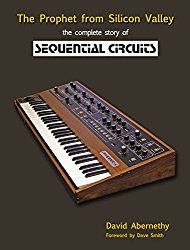
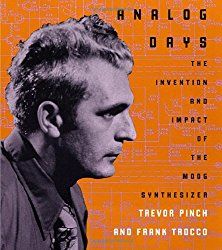
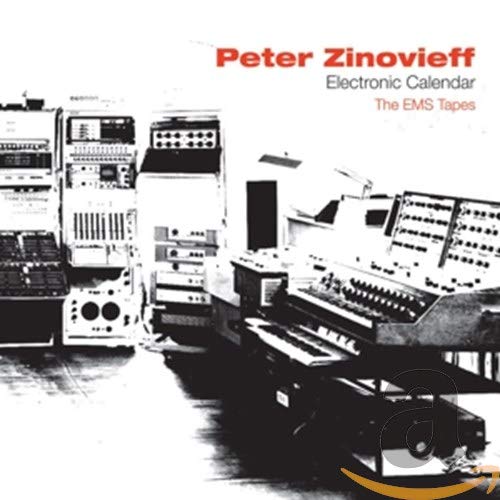
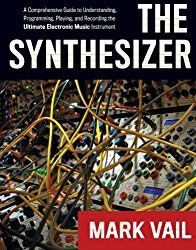

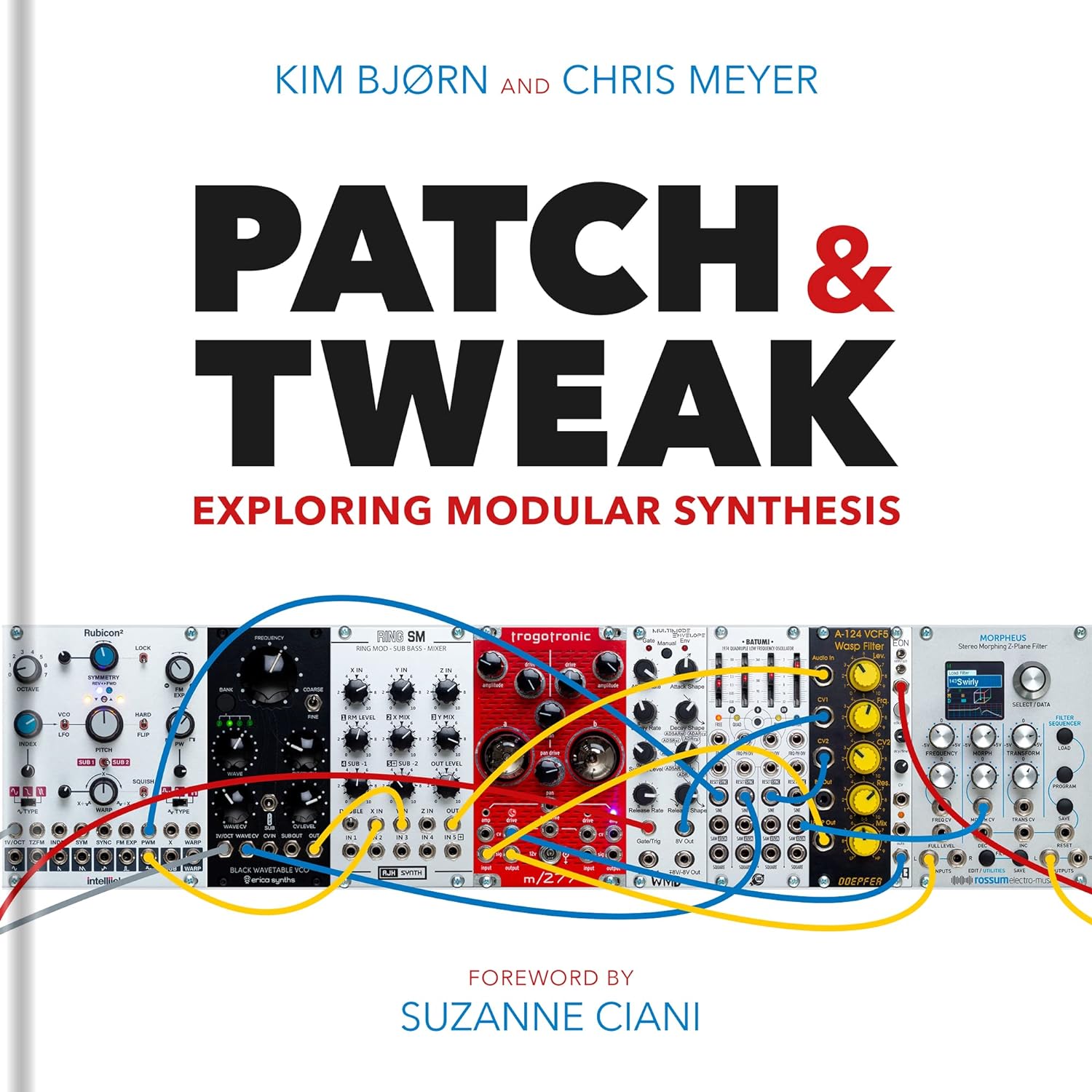
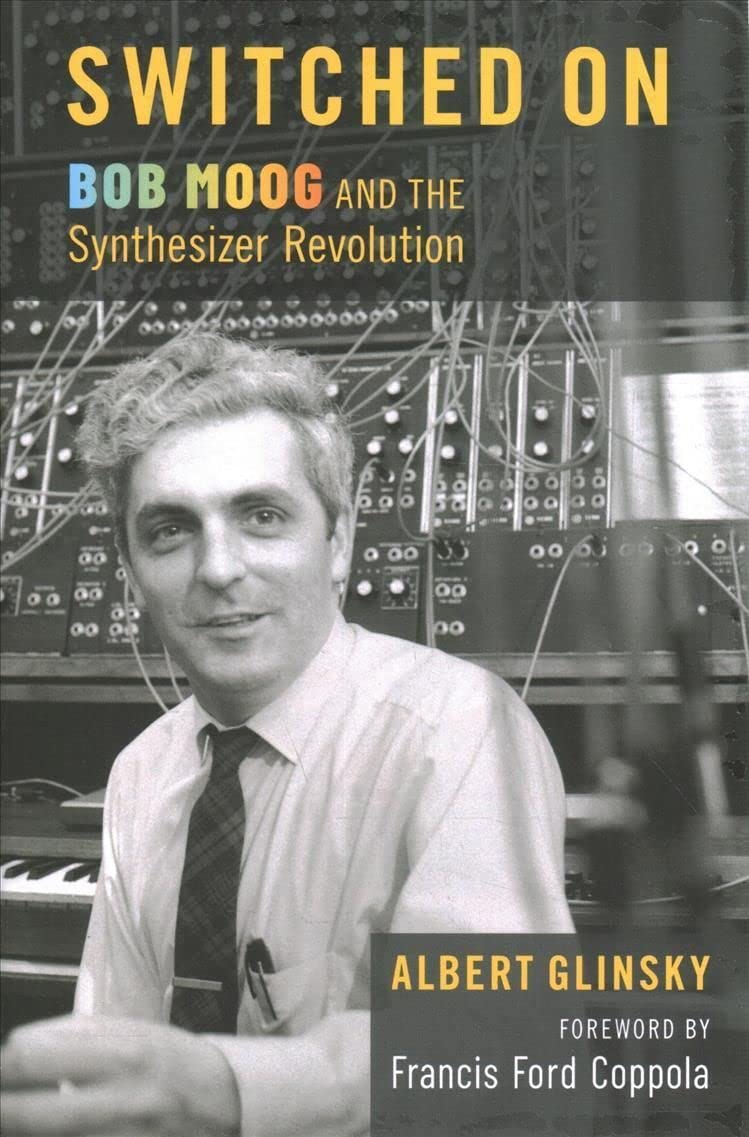
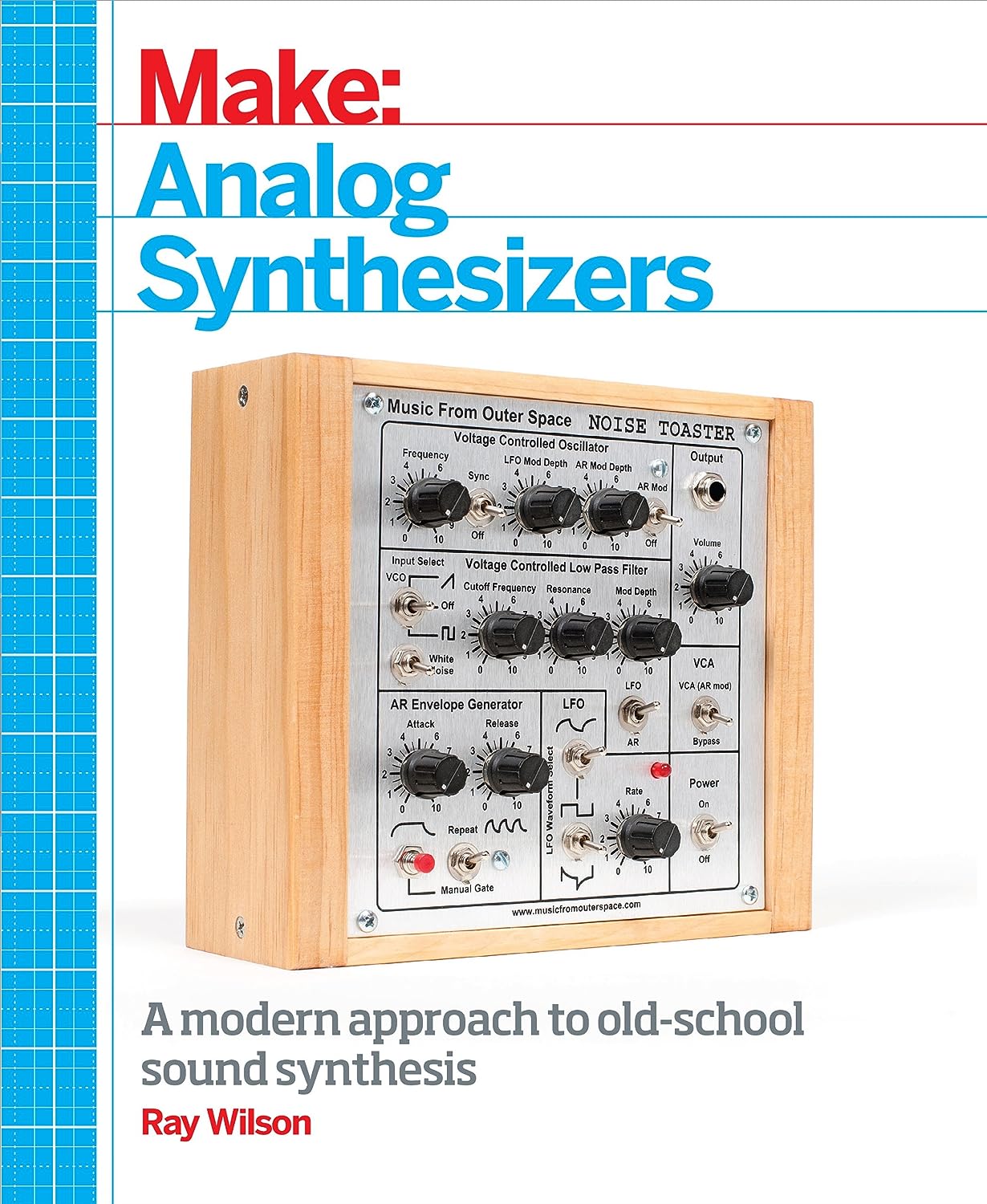
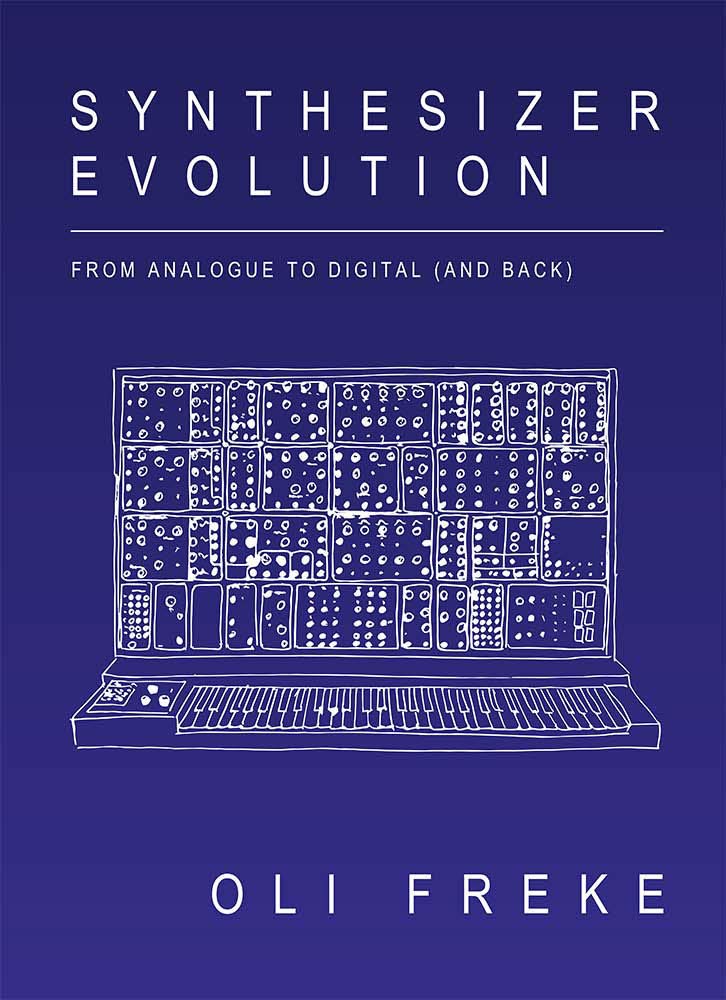

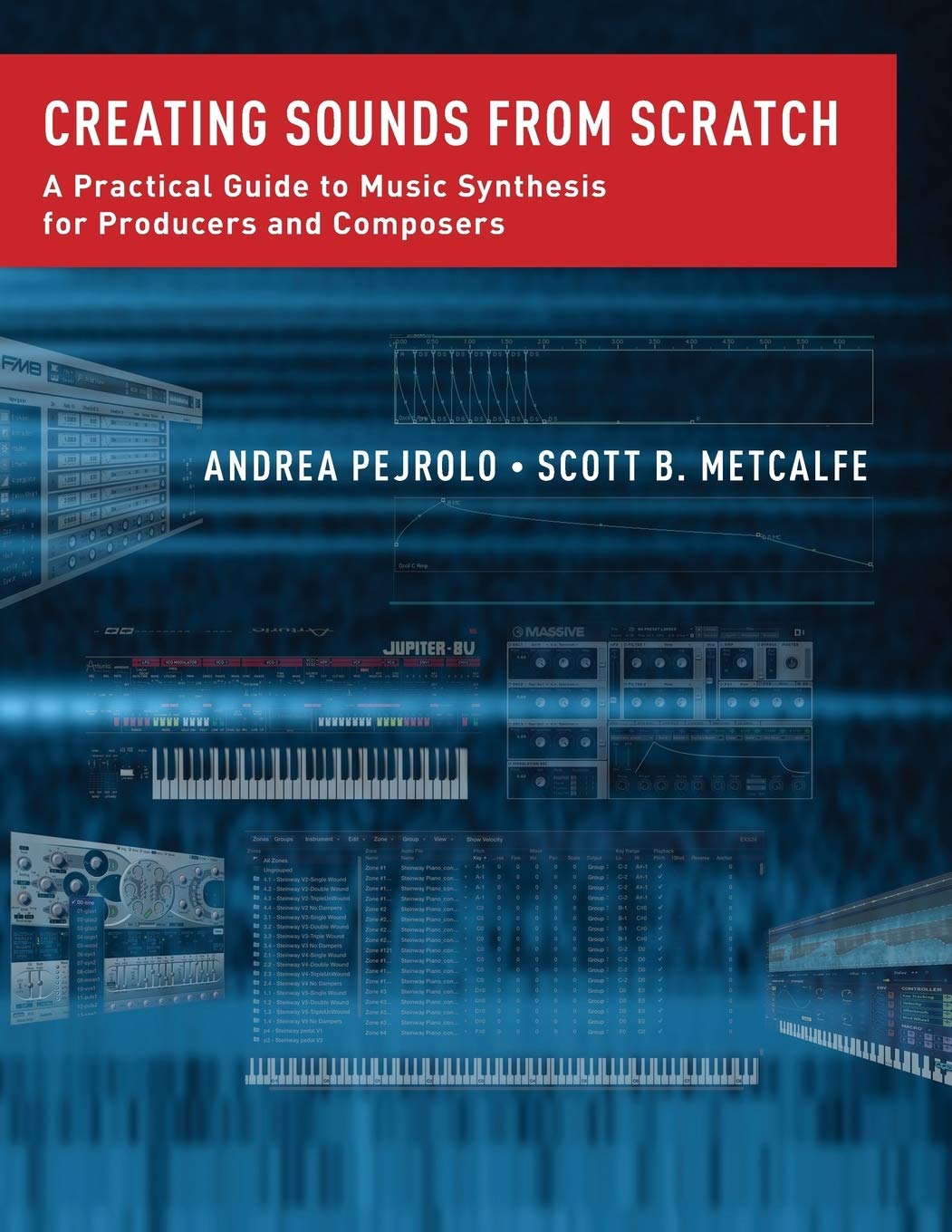


© Matrixsynth - All posts are presented here for informative, historical and educative purposes as applicable within fair use.
MATRIXSYNTH is supported by affiliate links that use cookies to track clickthroughs and sales. See the privacy policy for details.
MATRIXSYNTH - EVERYTHING SYNTH













© Matrixsynth - All posts are presented here for informative, historical and educative purposes as applicable within fair use.
MATRIXSYNTH is supported by affiliate links that use cookies to track clickthroughs and sales. See the privacy policy for details.
MATRIXSYNTH - EVERYTHING SYNTH



















